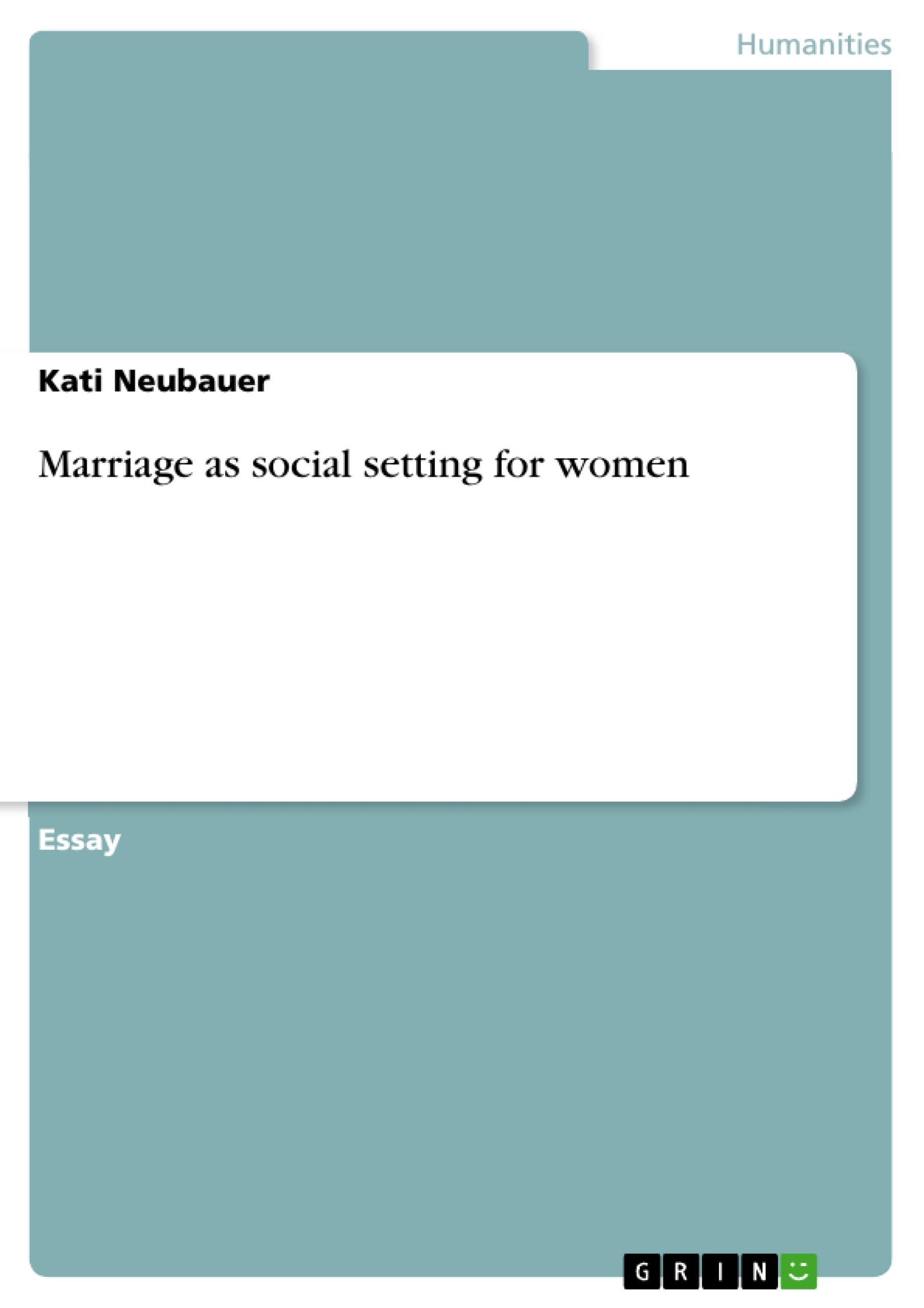In Hinduism marriage is the only accepted institution men and women can live together. This essay asks how marriage does work both for and against women in Hinduism.
Marriage as social setting for women
In Hinduism marriage is the only accepted institution men and women can live together. “For the sake of social order, a woman’s sexuality had to be fettered to her husband […].” (Pattanaik 109, 1) Through the unity of man and woman the circle of life (samsara) in Hinduism stays in motion. “This union is sacred because it creates a portal between the land of the dead and the land of the living, enabling ancestors to reenter samsara.” (Pattanaik 44, 1) As the religious institution it is, it provides specific social roles for a husband and his wife, as well. Since marriage seems to be the only way for a woman to leave her family’s household in traditional Hinduism, the question can be raised, what chances she can expect and what are the problems she has to face as a married woman.
As mentioned above, women have an accepted role in society whether as daughters or wives. Therefore, a marriage ensures a woman’s standing while she moves on from one status to the next. Being a wife, women experience protection from her religious and social role also towards other men and society.[1] One external sign is the bindi, a dot a married woman wears on her forehead. Only her husband is allowed to share the bed with her. By custom he should be the only man in her life before, during and after the marriage. In traditional understanding a wife in her fertile period had to express all her beauty by dressing up, using makeup and perfume to attract her husband. But, in contradiction, she had to cover herself and especially her hair and her face in general when other men were around. All these actions are expression of a social order, in which a married woman has a secured place and a clearly defined role.
Being married is associated with keeping the circle of life in motion, which means that the first and particular duty of a woman is to give birth to children of her husband.[2] “In samsara women are adored as mothers who bring forth life. In samaja they are respected only if they are wives.” (Pattanaik 97, 2) Her status may rise by the number of children she delivers. Then again, sexuality is socially regulated and can be demanded by the wife as well. (Pattanaik 101, 2, e.g. Skanda Purana, Somanatha Sthala Purana from the state of Gujarat). “Sex helps the wheel of life go around.” (Pattanaik 44, 1) But also, a woman having given birth several years in a row might be drained, which has a heavy impact on her health and life expectancy.
Giving birth in a marriage provides social protection for mother and child, since other sexual activity outside a marriage is not tolerated.[3] “Women bear children for husbands, not Nature.” (Pattanaik 97, 2) Through birth, next to the religious belief of rebirth of ancestors, a male inheritor is expected to secure the families continuity. Therefore, women are bound to their husbands in marriage. “Only when a man is convinced that a woman is sexually faithful to him can he believe that the child borne by her is the fruit of his seed.” (Pattanaik 97, 1) Also, by being obligated to only one man, it is believed that “Matrimony harnesses female fertility.” (Pattanaik 97, 2)
[...]
[1] “Harming a woman is seen as harming the nourisher of life, hence sinful.” (Pattanaik 43, 1)
[2] “In samsara childbearing was essential to rotate the wheel of life.” (Pattanaik 97, 1)
[3] “In society witnessed are required who can testify to the union of man and wife. This makes marriage mandatory.” (Pattanaik 97, 2)
- Citar trabajo
- Kati Neubauer (Autor), 2008, Marriage as social setting for women, Múnich, GRIN Verlag, https://www.grin.com/document/133374




